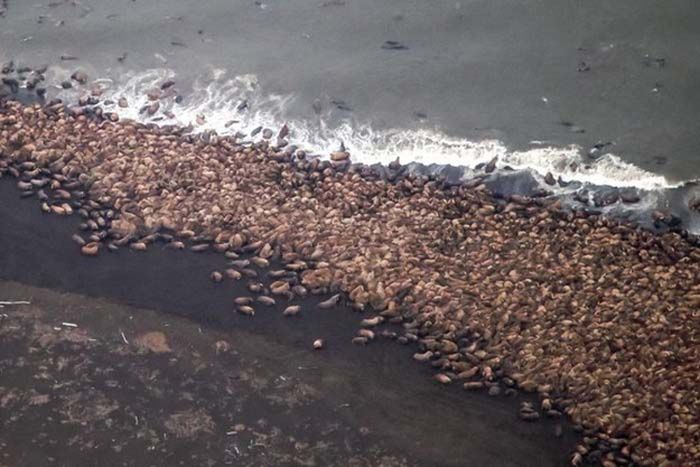|
|
Beach With Lot Of Walruses
|
The walrus has a diverse and opportunistic diet, feeding on more than 60 genera of marine organisms, including shrimp, crabs, tube worms, soft corals, tunicates, sea cucumbers, various mollusks, and even parts of other pinnipeds. However, it prefers benthic bivalve mollusks, especially clams, for which it forages by grazing along the sea bottom, searching and identifying prey with its sensitive vibrissae and clearing the murky bottoms with jets of water and active flipper movements. The walrus sucks the meat out by sealing its powerful lips to the organism and withdrawing its piston-like tongue rapidly into its mouth, creating a vacuum. The walrus palate is uniquely vaulted, enabling effective suction.
Aside from the large numbers of organisms actually consumed by the walrus, its foraging has a large peripheral impact on benthic communities. It disturbs (bioturbates) the sea floor, releasing nutrients into the water column, encouraging mixing and movement of many organisms and increasing the patchiness of the benthos.
Seal tissue has been observed in fairly significant proportion of walrus stomachs in the Pacific, but the importance of seals in the walrus diet is under debate. There have been isolated observations of walruses preying on seals up to the size of a 200 kg (440 lb) bearded seal. Rarely, incidents of walruses preying on seabirds, particularly the Brünnich's Guillemot Uria lomvia, have been documented. Walruses may occasionally prey on ice-entrapped narwhals and scavenge on whale carcasses but there is little evidence to prove this.
|
|









